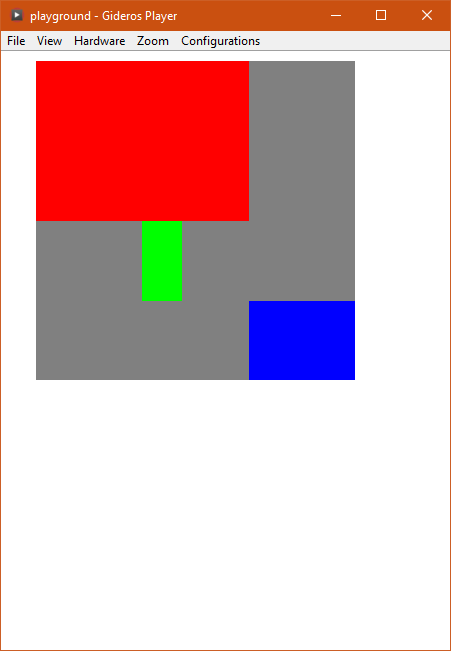Difference between revisions of "Sprite:setLayoutParameters"
(added another example) |
(added image) |
||
| Line 44: | Line 44: | ||
=== <translate>Examples</translate> === | === <translate>Examples</translate> === | ||
| − | '''Example''': center an image inside another image | + | '''Example 1''': center an image inside another image |
<br/> | <br/> | ||
| Line 61: | Line 61: | ||
<br/> | <br/> | ||
| − | '''Example''': pixels | + | '''Example 2''': pixels |
| + | <br/> | ||
| + | |||
| + | <gallery widths=136px heights=240px> | ||
| + | Layout parameters example.png | ||
| + | </gallery> | ||
<br/> | <br/> | ||
Revision as of 12:07, 26 September 2019
Available since: Gideros 2018.9
Class: Sprite
Description
Gideros Layout arranges a sprite's children into cells of a grid. With this method, you tell the parent's sprite how the rows and columns of the layout grid should be sized.
If there is extra space available after applying minimum widths and heights, it is distributed according to relative weights of each row/column.
Gideros layout system is heavily based on Java GridBagLayout principle. See here for more explanation:
https://www.math.uni-hamburg.de/doc/java/tutorial/uiswing/layout/gridbag.html
The following parameters apply:
- columnWidths: an array of minimum width for each column
- rowHeights: an array of minimum height for each row
- columnWeights: an array of relative weights for each column
- rowWeights: an array of relative weights for each row
- insetTop: the top margin
- insetLeft: the left margin
- insetBottom: the bottom margin
- insetRight: the right margin
Specifying a nil table will clear layout parameters.
Sprite:setLayoutParameters(layout)
Parameters
layout: (table) Table of layout parameters.
Examples
Example 1: center an image inside another image
-- LAYOUT CONSTRAINTS 01 @hgy29
local ticket = Bitmap.new(Texture.new("gfx/vip/ticket.png"))
local text = Bitmap.new(Texture.new("gfx/vip/text.png"))
-- Use auto layout on ticket to center text automatically
ticket:setLayoutParameters{ rowWeights = {1}, columnWeights = {1} }
text:setLayoutConstraints{}
ticket:addChild(text)
stage:addChild(ticket)
Example 2: pixels
-- LAYOUT CONSTRAINTS 02 @Nanocore
-- BUTTONS HOLDER
local myholder = Pixel.new(0x0, 0.5, 256, 256)
myholder:setPosition(8, 8)
myholder:setLayoutParameters({
columnWeights = {1, 1, 1}, -- 3 columns
rowWeights = {1, 1, 1, 1}, -- 4 rows
columnWidths = {32, 32, 32}, -- min columns width
rowHeights = {32, 32, 32, 32}, -- min rows width
})
-- BUTTONS
local mybtn1 = Pixel.new(0xff0000, 1, 32, 32)
mybtn1:setLayoutConstraints({
gridx = 0,
gridy = 0,
gridwidth = 2,
gridheight = 2,
anchor = Sprite.LAYOUT_ANCHOR_NORTHWEST,
fill = Sprite.LAYOUT_FILL_BOTH,
})
myholder:addChild(mybtn1)
local mybtn2 = Pixel.new(0x00ff00, 1, 32, 32)
mybtn2:setLayoutConstraints({
gridx = 1,
gridy = 2,
gridwidth = 1,
anchor = Sprite.LAYOUT_ANCHOR_NORTHWEST,
fill = Sprite.LAYOUT_FILL_VERTICAL,
})
myholder:addChild(mybtn2)
local mybtn3 = Pixel.new(0x0000ff, 1, 32, 32)
mybtn3:setLayoutConstraints({
gridx = 2,
gridy = 3,
gridwidth = 1,
anchor = Sprite.LAYOUT_ANCHOR_NORTHWEST,
fill = Sprite.LAYOUT_FILL_BOTH,
})
myholder:addChild(mybtn3)
-- ADD TO STAGE
stage:addChild(myholder)
